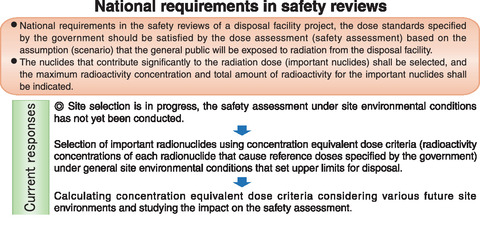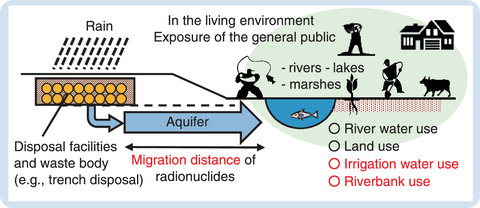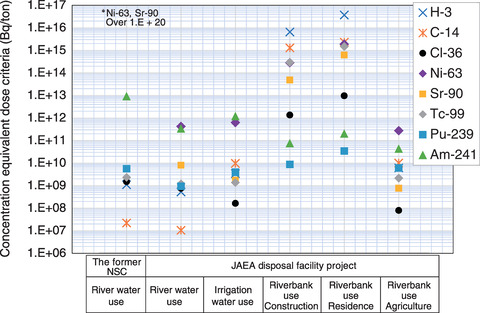
Fig.8-4 National requirements in safety reviews and current responses

Fig.8-5 Estimation of exposure (scenarios) used in the calculation of concentration equivalent dose criteria

Fig.8-6 Evaluation of the concentration equivalent dose criteria for trench disposal
We are implementing the project (trench-type and pit-type disposal) at JAEA to dispose low-level radioactive wastes (LLW) generated from JAEA and domestic research, medical, and industrial facilities. National requirements in safety reviews of the disposal facility project, it is necessary to show that the dose standards specified by the government are satisfied by the dose assessment (safety assessment) based on the estimation that the general public will be exposed to radiation from the disposal facility (scenario), and to select the nuclides that contribute significantly to the exposure dose (important nuclides) and show the maximum radioactivity concentration and total radioactivity for the important nuclides.
Additionally, these important nuclides must be selected to promote the smooth implementation of the disposal project, as they are also considered when examining waste treatment methods and measurement and analysis methods of waste. An overview of these requirements and our responses are shown in Fig.8-4.
Important nuclides have been selected from nuclides that have a large ratio between the radioactivity concentration of each nuclide that causes exposure to the dose criterion set by the government (i.e., the concentration equivalent dose criteria) and the radioactivity concentration of the nuclide contained in the waste. Nuclides having a low concentration equivalent dose criterion are more likely to be important nuclides because their exposure doses are high even if the radioactivity concentration in the waste is low.
The concentration equivalent dose criteria established by the former Nuclear Safety Commission (NSC) has been used as the basis for determining the legal upper limit of radioactivity concentration for near-surface disposal. Efforts to select a location for the disposal facility are underway; as such, we established several scenarios that take various future site environments into account to calculate the concentration equivalent dose criteria in each scenario and study their impact on the safety assessment, as summarized in Fig.8-5.
An example of our calculated concentration equivalent dose criteria for representative nuclides assuming trench disposal is shown in Fig.8-6. In the scenario of river water use, the value of C-14, which was previously the minimum value, was found to be even lower due to the estimation of location environmental conditions (e.g., close living area, short migration distance) that would result in higher exposure doses. Additionally, scenarios that account for various site environments (irrigation water use, riverbank use) revealed several other nuclides that contribute significantly to exposure (e.g., Cl-36).
Based on the results of this study, we believe that the use of the concentration equivalent dose criteria based on a wide range of site environments will enable the selection of a wide range of nuclides that are likely to be selected in the safety assessment that reflect actual locations, and will improve the reliability for safety reviews conducted by the government.
(Toshikatsu Sugaya)
<Previous: 8 Research and Development on Fuel Reprocessing, Decommissioning, and Radioactive Waste Management | Next: 8-2>